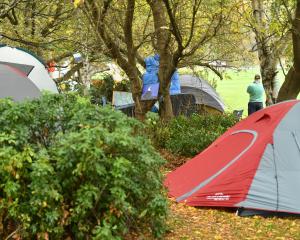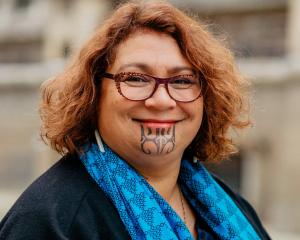Student numbers at Otago University were the topic of two related stories in the Otago Daily Times of April 1.
A news item reported ''no panic'' at the university over a major drop in first-year domestic enrolments, while an opinion piece by vice-chancellor Prof Harlene Hayne promoted the university's strategy of focusing on quality rather than size.
In an editorial the following day, the newspaper responded to what it called the vice-chancellor's spin, agreeing with her emphasis on quality while also clearly warning about the implications of continued roll shrinkage.
The warning is timely.
The numbers-based funding regime within which all New Zealand universities operate means enrolment figures are always of vital importance.
While there appear to be some perfectly good reasons for a drop in first-year enrolments - the main ones being the tightening of university entrance requirements in 2014 and a shrinking school-leaver population - the university will doubtless now be looking closely at its public relations, promotional materials and student recruiting policies.
When the current funding scheme was introduced in the early 1990s, Otago was the first university to recognise that growth was going to be essential to keep the institution afloat financially.
Its recruiting and marketing strategies produced tremendous year-on-year increases in first-year numbers for most of the decade.
The key recruiting activity was a year-round programme of visits to schools by an expanded team of highly skilled liaison officers.
They went twice a year to almost every secondary school in New Zealand to talk face-to-face with school leavers.
Each round of liaison visits was backed by a tightly co-ordinated marketing campaign managed by a Dunedin-based advertising agency, Creative Advertising, on a budget minuscule compared with the sums spent today.
Those campaigns used radio, billboard, television and newspaper advertising, innovative radio talkback sessions on nationally-linked networks, and attendance at careers expos throughout the country.
All this was complemented by well-designed publications for intending students and their parents, excellent on-campus advisory services and campus open days.
The public's view of the university today is formed largely by coverage in the media, by the impact of the university's own marketing and communications work, and by word of mouth and social media.
Traditional mass media - radio, television and newspapers - naturally report events and information that are out of the ordinary and will be of interest to the public.
Readers of this paper, in particular, are well served by its policy of covering university activities very fully and in a balanced manner.
However, the university has to reach further afield to the bulk of its potential student market.
Choosing a university is not like purchasing a consumer product from the shelves of the supermarket.
It's not easy to sample the product and change brands next shopping day.
Many school leavers are still unclear about what they want to do with their lives, and frequently make decisions in largely irrational or impulsive ways.
By far the most effective mechanism for recruiting new students is still the face-to-face interaction with the university's schools liaison officers.
Their ethics require them to act first and foremost as educators and counsellors working in the interests of the student, rather than as university marketers.
For that reason they are trusted and their advice is accepted.
Otago's strength has been its habit of appointing experienced former teachers with outstanding interpersonal skills.
To be fully effective, their work needs to be backed up by good publications, honest, relevant advertising and well-designed strategic use of social media.
Parents, other family members and former students are important targets, too.
They are often influential in the decision-making, but many have little knowledge of what student life is like these days in Dunedin.
This is a difficult information gap to fill.
There are useful university publications aimed at different sectors.
There is also a great deal of online information, on the university's densely crowded website and on other social media, but most is hard to find and some is far from clear.
The tertiary information days are excellent, but are not within the reach of most families from outside the region.
There's no question that Otago is a highly regarded, well-managed and successful university.
Vice-Chancellor Hayne's pursuit of quality is to be applauded and supported at every level, and recent annual reports make it clear that in all three of its mandated functions - teaching, research and community service - the university is meeting its objectives.
In international ratings, where wider sets of criteria are used, Otago continues to be one of two New Zealand universities (the other is Auckland) that can claim an international reputation, although it should be of concern that in the latest round of the most sophisticated set of performance rankings, those developed annually by the British publication Times Higher Education, New Zealand universities did not fare as well as they have in the past.
Has Otago fallen off the pace from its earlier leading position?
It certainly needs to review its strategies, listen carefully to the market, ask itself whether it has the right balance of recruiting staffing, and have a good look at what it spends its marketing dollars on, all without lowering its admission criteria.
It does not need another round of expansion like that seen in the 1990s, but it clearly cannot sustain continued shrinkage either.
There is no room for complacency about student numbers.
• Dr Warwick Johnson is a former director of external relations at the University of Otago.












